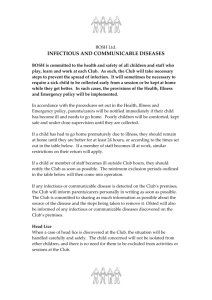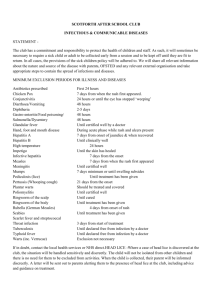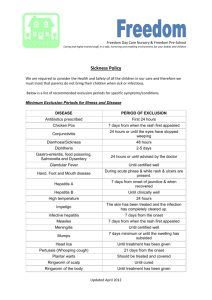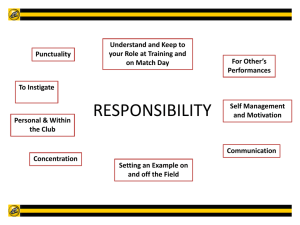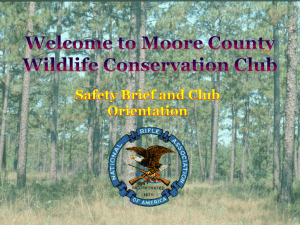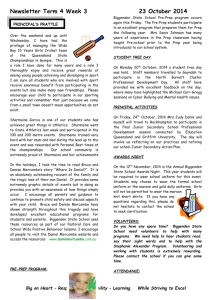Minimum Exclusion Periods for Illness and Disease
advertisement
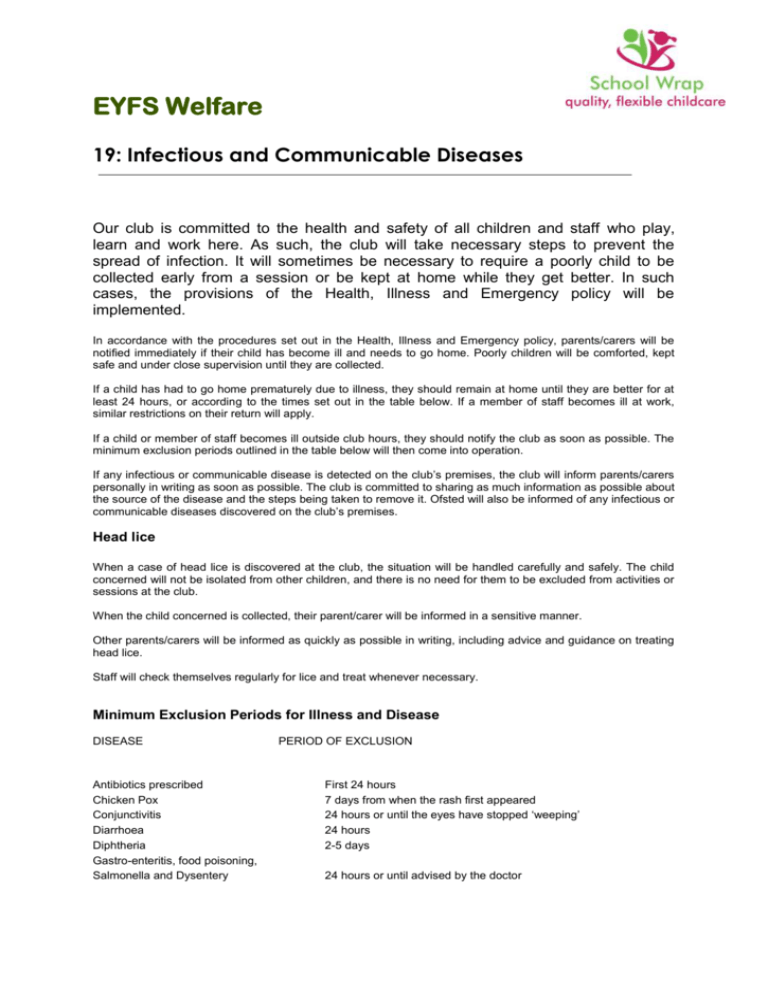
EYFS Welfare 19: Infectious and Communicable Diseases Our club is committed to the health and safety of all children and staff who play, learn and work here. As such, the club will take necessary steps to prevent the spread of infection. It will sometimes be necessary to require a poorly child to be collected early from a session or be kept at home while they get better. In such cases, the provisions of the Health, Illness and Emergency policy will be implemented. In accordance with the procedures set out in the Health, Illness and Emergency policy, parents/carers will be notified immediately if their child has become ill and needs to go home. Poorly children will be comforted, kept safe and under close supervision until they are collected. If a child has had to go home prematurely due to illness, they should remain at home until they are better for at least 24 hours, or according to the times set out in the table below. If a member of staff becomes ill at work, similar restrictions on their return will apply. If a child or member of staff becomes ill outside club hours, they should notify the club as soon as possible. The minimum exclusion periods outlined in the table below will then come into operation. If any infectious or communicable disease is detected on the club’s premises, the club will inform parents/carers personally in writing as soon as possible. The club is committed to sharing as much information as possible about the source of the disease and the steps being taken to remove it. Ofsted will also be informed of any infectious or communicable diseases discovered on the club’s premises. Head lice When a case of head lice is discovered at the club, the situation will be handled carefully and safely. The child concerned will not be isolated from other children, and there is no need for them to be excluded from activities or sessions at the club. When the child concerned is collected, their parent/carer will be informed in a sensitive manner. Other parents/carers will be informed as quickly as possible in writing, including advice and guidance on treating head lice. Staff will check themselves regularly for lice and treat whenever necessary. Minimum Exclusion Periods for Illness and Disease DISEASE Antibiotics prescribed Chicken Pox Conjunctivitis Diarrhoea Diphtheria Gastro-enteritis, food poisoning, Salmonella and Dysentery PERIOD OF EXCLUSION First 24 hours 7 days from when the rash first appeared 24 hours or until the eyes have stopped ‘weeping’ 24 hours 2-5 days 24 hours or until advised by the doctor DISEASE PERIOD OF EXCLUSION Glandular Fever Hand, Foot and Mouth disease Hepatitis A Hepatitis B High temperature Impetigo Infective hepatitis Measles Meningitis Mumps Pediculosis (lice) Pertussis (Whooping cough) Plantar warts Poliomyelitis Ringworm of scalp Ringworm of the body Rubella (German Measles) Scabies Scarlet fever and streptococcal infection of the throat Tuberculosis Typhoid fever Warts (including Verrucae) Until certified well During acute phase and while rash and ulcers are present 7 days from onset of jaundice & when recovered Until clinically well 24 hours Until the skin has healed 7 days from the onset 7 days from when the rash first appeared Until certified well 7 days minimum or until the swelling has subsided Until treatment has been given 21 days from the onset Should be treated and covered Until certified well Until cured Until treatment has been given 4 days from onset of rash Until treatment has been given 3 days from the start of the treatment Until declared free from infection by a doctor Until declared free from infection by a doctor Exclusion not necessary. Sufferer should keep feet covered. This list is not necessarily exhaustive, and staff are encouraged to contact local health services if they are in any doubt.

